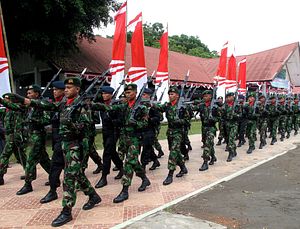On January 8, an Indonesian state-owned company announced that it had moved forward with an additional order for helicopters. The announcement represented just the latest effort by the Southeast Asian state to boost its helicopter fleet as part of its wider military modernization.
As I have noted before in these pages, Indonesia’s longstanding efforts to strengthen and modernize its military have continued into the government of President Joko “Jokowi” Widodo, with a mix of opportunities and challenges therein. While the focus is often on discrete, new developments such as acquisitions or budgets, the range of issues are in fact much broader and include leadership, focus, and capacity.
One aspect of Indonesia’s military modernization in terms of capabilities has been boosting its helicopter fleet. Indonesia has been looking to boost its fleet to eventually replace some of its older helicopters as well as add to new ones that have begun coming online over the past few years, including the Bell 412EP helicopters. The boost is much-needed as the Southeast Asian state seeks to address manifold internal and external challenges and equipping its military for the daunting task of defending the world’s fourth most populous country.
This week, Indonesia’s military modernization was in the headlines again with a confirmation of an additional order of additional helicopters. PT Dirgantara Indonesia announced that it had ordered 17 more medium-lift helicopters for the Indonesian military, and, according to the announcement, the order in question consists of eight Airbus Helicopters H22Ms for the Indonesian Air Force (TNI-AU) and nine Bell 412EPIs for the Indonesian Army (TNI-AD).
The announcement represents a continuation of ongoing efforts to boost capabilities in this realm. Indonesia had already previously signaled it was considering options to boost its fleet for various functions, and both helicopter orders constitute additional ones and build on industrial relationships that Indonesia already has.
No much in the way of additional specifics have been disclosed about the future trajectory of the new orders that have been placed, which is contingent on various specific factors including adhering to incremental timelines and structural factors such as production capacity. PTDI has indicated that it expects both orders to be fulfilled within the next two to three years.
































